The vestibular nerve plays a crucial role in our ability to maintain balance and spatial orientation. Damage to this nerve can have a significant impact on an individual’s quality of life and daily functioning. Understanding the anatomy and function of the vestibular nerve, as well as the causes, symptoms, diagnosis, treatment options, and living with vestibular nerve damage, can provide valuable insights into this complex condition.
Understanding the Vestibular Nerve
Located within the inner ear, the vestibular nerve is responsible for transmitting sensory information about head movements and positions to the brain. It is part of the vestibular system, which includes the semicircular canals and otolith organs. Working together, these structures enable us to maintain balance, adjust our gaze, and coordinate movements.
Anatomy of the Vestibular Nerve
The vestibular nerve is one of the two branches of the vestibulocochlear nerve. It consists of fibers that originate from the vestibular ganglion, located in the inner ear. These fibers then extend to the brainstem, where they synapse with other neurons involved in processing the vestibular information.
The vestibular ganglion, also known as Scarpa’s ganglion, is a cluster of nerve cell bodies located within the internal acoustic meatus. It is named after Antonio Scarpa, an Italian anatomist who first described it in the late 18th century. The ganglion contains the cell bodies of the bipolar neurons that make up the vestibular nerve.
From the vestibular ganglion, the fibers of the vestibular nerve travel through the internal acoustic meatus, a bony canal in the temporal bone. This canal also houses the cochlear nerve, which is responsible for transmitting auditory information from the inner ear to the brain. The close proximity of these two nerves within the internal acoustic meatus highlights the interconnectedness of our auditory and vestibular systems.
As the fibers of the vestibular nerve leave the internal acoustic meatus, they enter the brainstem. Here, they synapse with other neurons in the vestibular nuclei, which are located in the medulla and pons. These nuclei play a crucial role in processing and integrating vestibular information from both sides of the body.
Function of the Vestibular Nerve
The primary function of the vestibular nerve is to transmit sensory signals related to head movements and positions. This information allows the brain to make coordinated adjustments in other parts of the body, such as the eyes and muscles, to maintain balance, stability, and spatial orientation.
When we move our heads, the fluid-filled semicircular canals in the inner ear detect the changes in motion. These canals are arranged in three perpendicular planes, allowing us to sense movements in all directions. The movement of the fluid within the canals stimulates hair cells, which are sensory receptors that convert mechanical motion into electrical signals.
The electrical signals generated by the hair cells are then transmitted through the vestibular nerve to the brain. The brain processes this information and uses it to generate appropriate motor responses. For example, if we tilt our heads to the side, the brain will activate the muscles in our neck and back to maintain our balance and prevent us from falling over.
In addition to maintaining balance, the vestibular nerve also plays a role in coordinating eye movements. When we rotate our heads, the vestibular system sends signals to the ocular motor nuclei, which control the movement of our eyes. This ensures that our gaze remains stable and focused on a specific target, even when our head is in motion.
Furthermore, the vestibular nerve helps us maintain spatial orientation. It provides the brain with information about our body’s position in relation to gravity and the external environment. This allows us to navigate our surroundings, judge distances, and perceive the world in three dimensions.
In summary, the vestibular nerve is a vital component of the vestibular system, responsible for transmitting sensory information about head movements and positions to the brain. Its intricate anatomy and functions highlight the complexity of our ability to maintain balance, adjust our gaze, and coordinate movements in our daily lives.
Causes of Vestibular Nerve Damage
Several factors can contribute to damage of the vestibular nerve. Infections and diseases, such as vestibular neuritis, labyrinthitis, and Ménière’s disease, can cause inflammation and damage to the nerve fibers. Trauma and injuries, such as head trauma or exposure to loud noise, can also result in vestibular nerve damage.
Infections and Diseases
Infections, such as viral or bacterial infections, can invade the inner ear and cause inflammation of the vestibular nerve. This inflammation can disrupt the normal functioning of the nerve fibers, leading to dizziness, vertigo, and balance problems. For example, vestibular neuritis is a condition caused by a viral infection that affects the vestibular nerve, resulting in severe dizziness and loss of balance. Similarly, labyrinthitis is an infection that causes inflammation of the inner ear, including the vestibular nerve, leading to symptoms like vertigo, nausea, and hearing loss.
Ménière’s disease, on the other hand, is a chronic condition that affects the inner ear and can cause damage to the vestibular nerve over time. This disease is characterized by recurring episodes of vertigo, fluctuating hearing loss, tinnitus (ringing in the ears), and a feeling of fullness in the affected ear. The exact cause of Ménière’s disease is unknown, but it is believed to be related to fluid buildup in the inner ear, which can put pressure on the vestibular nerve and lead to its damage.
Trauma and Injuries
Head trauma, such as concussions or fractures, can result in damage to the vestibular nerve. The sudden impact can cause the nerve fibers to stretch or tear, leading to a disruption in the transmission of sensory signals. This can result in symptoms like dizziness, imbalance, and difficulty with coordination. In some cases, the damage to the vestibular nerve may be temporary, but in severe cases, it can lead to long-term vestibular dysfunction.
Exposure to intense noise is another potential cause of vestibular nerve damage. Loud noises, such as explosions or prolonged exposure to loud music, can cause damage to the delicate structures of the inner ear, including the vestibular nerve. This type of damage is often associated with noise-induced hearing loss, but it can also affect the vestibular system. Individuals who work in noisy environments or regularly attend loud concerts may be at a higher risk of developing vestibular nerve damage.
It is important to note that while these are common causes of vestibular nerve damage, there may be other factors involved as well. Each individual’s situation is unique, and a thorough evaluation by a healthcare professional is necessary to determine the exact cause of vestibular nerve damage and develop an appropriate treatment plan.
Symptoms of Vestibular Nerve Damage
Vestibular nerve damage can manifest in a variety of symptoms, which can greatly impact an individual’s daily life. Balance and spatial orientation issues are common, resulting in dizziness, unsteadiness, and frequent falls. Some individuals may also experience hearing problems, such as tinnitus or hearing loss.
Balance and Spatial Orientation Issues
Damage to the vestibular nerve can disrupt the transmission of sensory signals essential for maintaining balance and spatial orientation. This can lead to feelings of dizziness, vertigo (a spinning sensation), and unsteadiness. Individuals may struggle with day-to-day tasks, such as walking, climbing stairs, or driving, due to a compromised sense of balance.
Imagine waking up in the morning and feeling a sudden wave of dizziness wash over you. As you try to stand up, the room starts spinning, making it difficult to find your balance. This is just one of the many challenges individuals with vestibular nerve damage face on a daily basis. Simple tasks like getting out of bed or walking down the street become daunting obstacles to overcome.
Not only does vestibular nerve damage affect balance, but it also impacts spatial orientation. Imagine trying to navigate through a crowded shopping mall, constantly feeling like you’re on a roller coaster. The world around you seems to tilt and sway, making it hard to judge distances and maintain a steady gait. It’s like living in a perpetual state of imbalance, where every step is a gamble.
Hearing Problems
The vestibular nerve is closely connected to the auditory system. Therefore, damage to this nerve can also result in hearing problems. Tinnitus, a ringing or buzzing sound in the ears, and hearing loss may occur as a result of vestibular nerve damage. It is important to note that hearing problems can also arise independently, even in the absence of vestibular nerve damage.
Imagine sitting in a quiet room, trying to enjoy a moment of peace, only to be bombarded by a constant ringing or buzzing sound in your ears. This is the reality for many individuals with vestibular nerve damage. Tinnitus can be incredibly frustrating and distracting, making it difficult to concentrate or relax. It’s like having a never-ending soundtrack playing in your head, drowning out the sounds of the world around you.
In addition to tinnitus, vestibular nerve damage can also lead to hearing loss. Conversations become muffled, and sounds that were once clear and crisp now seem distant and distorted. Imagine struggling to hear the voices of your loved ones or missing out on the beautiful melodies of your favorite songs. It’s a constant reminder of the impact that vestibular nerve damage can have on one’s quality of life.
Diagnosing Vestibular Nerve Damage
Due to the complex nature of vestibular nerve damage, a comprehensive evaluation is necessary to make an accurate diagnosis. Medical history, physical examination, and specialized tests are often employed to identify the underlying cause and extent of the damage.
Vestibular nerve damage can have a profound impact on a person’s quality of life, affecting their ability to maintain balance, causing dizziness, and even leading to falls. Therefore, it is crucial to conduct a thorough assessment to determine the best course of treatment.
Medical History and Physical Examination
A detailed medical history and physical examination play a vital role in diagnosing vestibular nerve damage. The healthcare provider will inquire about the symptoms experienced, the duration of symptoms, and any previous medical conditions or treatments.
During the physical examination, the healthcare provider may evaluate balance, coordination, and eye movements. They will carefully observe the patient’s gait, looking for any signs of unsteadiness or difficulty in maintaining equilibrium. They may also perform a Romberg test, where the patient is asked to stand with their feet together and eyes closed to assess their ability to maintain balance without visual cues.
Eye movements are another crucial aspect of the physical examination. The healthcare provider may use a technique called the “head impulse test” to evaluate the vestibulo-ocular reflex, which is responsible for stabilizing eye movements during head movements. This test involves the patient fixating on a target while the healthcare provider rapidly turns their head to assess for any abnormal eye movements.
Imaging and Laboratory Tests
Imaging techniques, such as magnetic resonance imaging (MRI), can help identify structural abnormalities in the inner ear and brain that may contribute to vestibular nerve damage. MRI scans provide detailed images of the vestibular system, allowing healthcare providers to visualize any tumors, inflammation, or other abnormalities that may be affecting the vestibular nerve.
Additionally, laboratory tests, such as blood work, may be conducted to rule out underlying infections or systemic conditions that could be contributing to the vestibular nerve damage. Blood tests can help identify markers of inflammation or detect any signs of infection that may require further investigation.
Furthermore, specialized tests may be performed to assess the function of the vestibular system more directly. These tests can include electronystagmography (ENG), which measures eye movements in response to specific stimuli, or videonystagmography (VNG), which uses infrared cameras to track eye movements during various head and body positions.
Overall, diagnosing vestibular nerve damage requires a multidimensional approach that combines medical history, physical examination, and specialized tests. By gathering comprehensive information, healthcare providers can accurately identify the underlying cause and extent of the damage, enabling them to develop an appropriate treatment plan tailored to each individual’s needs.
Treatment Options for Vestibular Nerve Damage
The treatment of vestibular nerve damage aims to manage the symptoms, improve quality of life, and address the underlying cause whenever possible. It is important to consult with a healthcare professional to determine the most appropriate treatment plan for each individual case.
Medication and Therapy
In some cases, medications can help alleviate symptoms associated with vestibular nerve damage. These may include anti-dizziness medications, anti-nausea medications, or corticosteroids to reduce inflammation. Vestibular rehabilitation therapy, a specialized form of physical therapy, can also be beneficial in retraining the brain to compensate for the loss of vestibular function.
Anti-dizziness medications, such as meclizine or dimenhydrinate, work by suppressing the signals from the inner ear that cause dizziness. These medications can help reduce vertigo, a common symptom of vestibular nerve damage, and provide relief to individuals experiencing severe dizziness.
Anti-nausea medications, such as ondansetron or promethazine, can be prescribed to manage the nausea and vomiting that often accompany vestibular nerve damage. These medications work by blocking the signals in the brain that trigger the sensation of nausea, providing relief to individuals who experience these distressing symptoms.
Corticosteroids, such as prednisone, can be used to reduce inflammation in the vestibular nerve. Inflammation can contribute to the symptoms of vestibular nerve damage, including dizziness and imbalance. By reducing inflammation, corticosteroids can help alleviate these symptoms and improve overall function.
Vestibular rehabilitation therapy (VRT) is a specialized form of physical therapy that focuses on exercises and maneuvers designed to improve balance and reduce dizziness. VRT can help individuals with vestibular nerve damage regain their sense of balance and reduce the severity and frequency of dizziness episodes. This therapy involves a series of exercises that gradually challenge the vestibular system and help the brain adapt to the loss of function in the damaged nerve.
Surgical Interventions
In severe cases of vestibular nerve damage, surgical interventions may be considered. These procedures aim to either repair or bypass the damaged nerve. Surgical options include vestibular nerve sectioning, vestibular nerve neurectomy, or cochlear implants in cases of combined hearing and vestibular problems. The appropriateness of surgery depends on various factors and should be discussed with a healthcare professional.
Vestibular nerve sectioning is a surgical procedure in which the vestibular nerve is cut to eliminate the signals that cause dizziness and imbalance. This procedure is typically considered when other treatment options have failed to provide relief and the symptoms significantly impact the individual’s quality of life.
Vestibular nerve neurectomy involves the removal of the damaged portion of the vestibular nerve. This procedure aims to eliminate the source of symptoms and improve overall function. It is usually considered when the damage to the vestibular nerve is localized and other treatment options have not been effective.
In cases where vestibular nerve damage is accompanied by hearing loss, cochlear implants may be considered. Cochlear implants are electronic devices that bypass the damaged inner ear and directly stimulate the auditory nerve, allowing individuals to perceive sound. This option is typically reserved for individuals who have significant hearing loss in addition to vestibular nerve damage.
It is important to note that surgical interventions carry risks and potential complications. The decision to undergo surgery should be carefully considered and discussed with a healthcare professional who can provide guidance based on the individual’s specific condition and needs.
Living with Vestibular Nerve Damage
Managing the challenges associated with vestibular nerve damage requires a multi-faceted approach that encompasses coping mechanisms, lifestyle changes, and accessing support and resources.
Coping Mechanisms and Lifestyle Changes
Individuals with vestibular nerve damage can adopt specific coping mechanisms to help manage their symptoms. These may include avoiding triggers, finding techniques to minimize anxiety and stress, and making modifications to their environment to reduce the risk of falls or injuries. Lifestyle changes such as regular exercise, maintaining a healthy diet, and prioritizing rest and self-care can also contribute to overall well-being.
Support and Resources
Living with vestibular nerve damage can be challenging, both physically and emotionally. Seeking support from healthcare professionals, support groups, or online communities can provide valuable guidance, encouragement, and a sense of belonging. Accessing reliable resources, such as educational websites and publications, can also enhance understanding and help individuals make informed decisions about their condition.
In conclusion, damage to the vestibular nerve can significantly impact an individual’s balance, spatial orientation, and overall quality of life. Understanding the complex anatomy and function of the vestibular nerve, as well as the causes, symptoms, diagnosis, treatment options, and strategies for living with vestibular nerve damage, is crucial for both healthcare professionals and individuals affected by this condition. If you suspect you may have vestibular nerve damage or are experiencing symptoms, it is important to consult with a qualified healthcare professional for an accurate diagnosis and appropriate management plan.




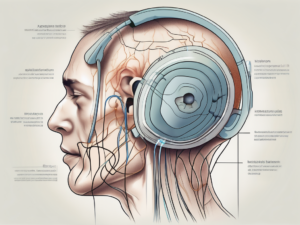
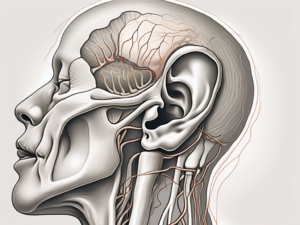
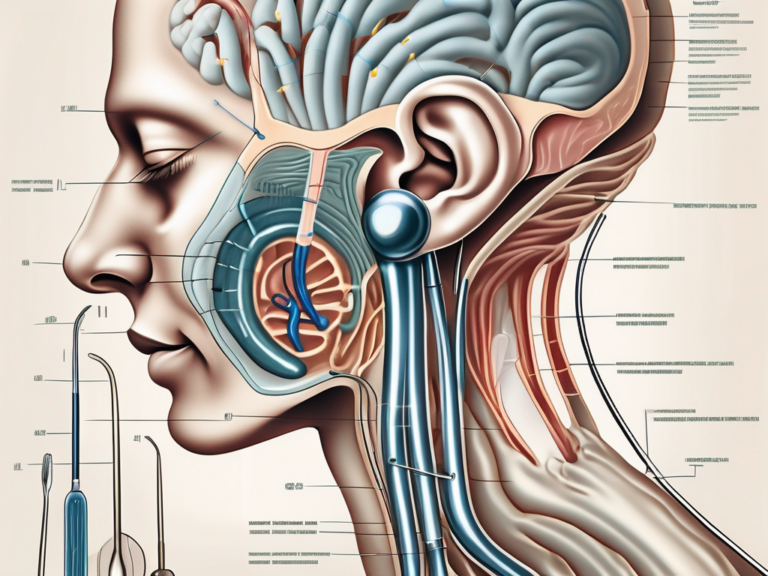
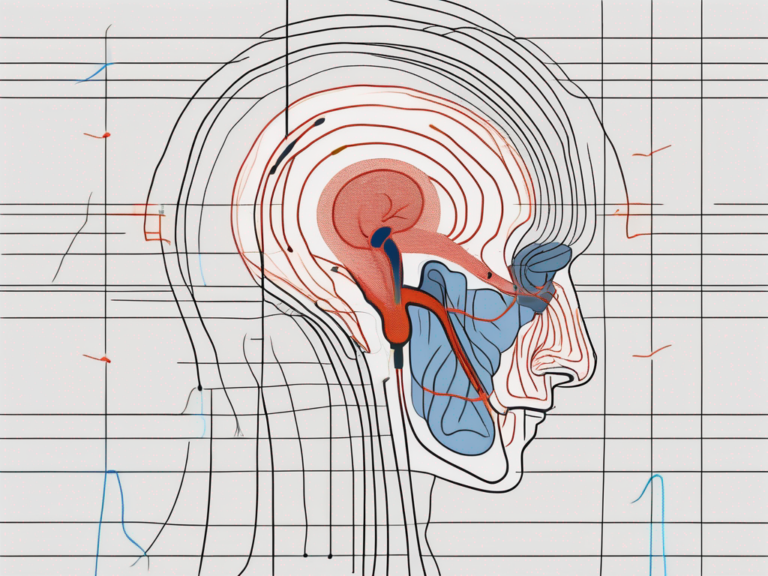
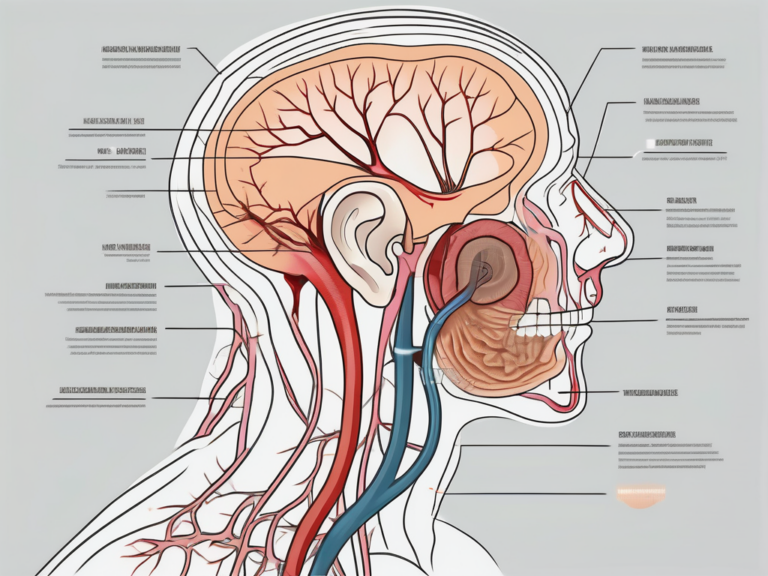
+ There are no comments
Add yours